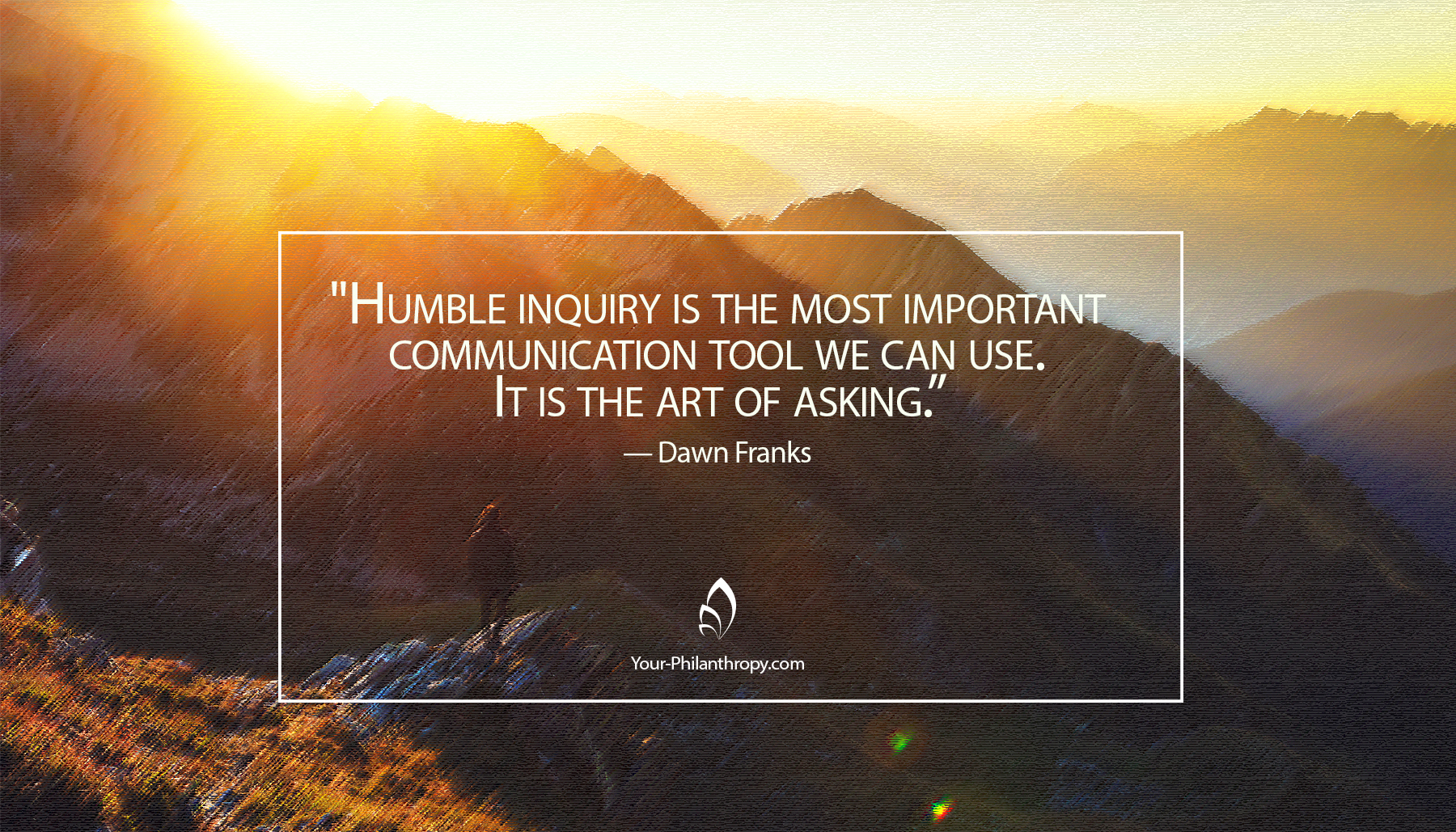When a reader takes the time to comment on something I’ve written it gets my attention. Did I hit my target or miss it all together? Then there are comments like the one Phedra Johnson recently left on “The Benefits of Humble Inquiry between Donors and Nonprofits.”
“You gave great thumbnail sketches of diagnostic, confrontational and process-oriented inquiry. However, there was really no outline or resolution for the task at hand: Humble inquiry. Could you more clearly outline how one goes about this?
Important questions still needed to be answered. Phedra, who works for the American Cancer Society, asked how to do humble inquiry, how to go about this effective, but challenging task.
It just so happens that I recently spent time with a philanthropist listening to him describe his childhood, career, and future hopes. He didn’t start sharing some of these details right off, but it is my habit to ask a lot of questions. The trick, though, is to listen more than ask. Once he started down memory lane, I did a lot of listening as he tripped across the years.
And, in Dawn-like style, I frequently stepped into the story of his journey to ask clarifying questions. Just as important as my listening was observing, looking for cues and clues.
It was the Dawn version of humble inquiry. As he talked, we sailed high into clouds of joy with laughter and smiles and over bumps in the road of challenges and disappointment. Eye contact was real and searching. Layer after layer trust grew.
This glimpse into where he came from and who he is today helped me understand more about his giving and in particular the why of his giving. The why of giving is at the center of all philanthropy. It’s the reason the best fundraisers know a lot about their donors, even working to help them connect to other causes that will mean a great deal to the donor.
Humble Inquiry is the most important communication tool we can use. It is the art of asking. It is like the famous Monet painting, The Terrace at Sainte-Adresse, when I look at it I see stories within stories.
What makes inquiry humble? Slow and gentle.
12 Tips for Humble Inquiry – Dawn Style
- Listen more than ask. I know that’s obvious, but it’s hard to do.
- Repeat what you heard often. It encourages clarification on their part, providing significant twists and turns – in effect, the nuances that are their personal story.
- When the subject seems especially personal, ask for permission to delve more deeply.
- Make a note of themes that bubble up. Ask a question that opens that idea more.
- Check your own instincts to sense how deeply personal the conversation is becoming.
- Ask permission to ask another question that’s deeper or could be uncomfortable.
- Give them the opportunity to shift the conversation away from a topic.
- Make note; it will often come up again as the person is internally processing their thoughts.
- If it does come up later, circle around saying, “That felt like it might be difficult to talk about, or very personal.”
- Wait and breathe, giving them space to process emotions and thoughts. When their eyes drift away – into the depths of their mind – give them space to think. After the pause, they will often dive in.
- Take notes discreetly and look them in the eye as much as possible. Scribble now and transcribe them into something sensible later – sooner than later.
- Put listening first and allow the next question to develop naturally. Be willing to let go of your original list.
A conversation with a philanthropist that allows humble inquiry is an extraordinary gift. As Matthew 7:7 says, to ask is to receive.
“Ask and it will be given to you; seek and you will find; knock and the door will be opened to you.” – Matthew 7:7
Be watching for my next blog post when I experience what it’s like to be on the other side of humble inquiry.


I feel like I have just been given the special gift of “Dawn Style.” Thank you for this. It does seem sensible but, given we must slow down to achieve it, can often be hard to accomplish.
Ever learning,
Nan
Thanks Nan. It’s a challenge we all face in our work. Dawn
This is so insightful and beautifully described. It gives me insight into your brilliance in discovering the true issues, emotions and relevant data during a conversation. Thank you.